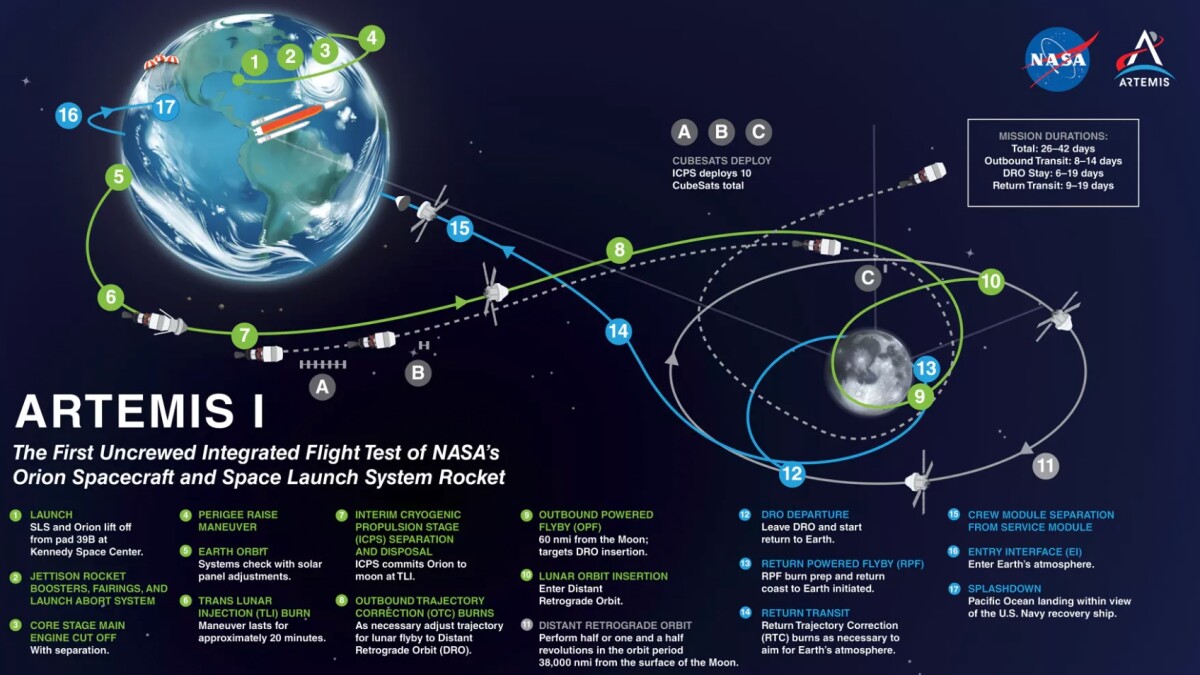A new era begins 50 years after the Apollo mission. Today at 2:33 p.m. the spacecraft Orion will be launched. Ex-ISS commander Alexander Gerst can hardly wait for the start. There is a live stream.
It starts! NASA and Alexander Gerst can hardly wait for the start of the Artemis program. (Source: NASA)
- The first time window for the start of the Artemis I mission will open on Monday at 2:33 p.m.
- A rocket about 100 meters high with the docked Orion spacecraft is to take off from the Kennedy Space Center in Florida.
- The goal of the mission is to bring people safely to the moon and beyond.
- ESA astronaut Alexander Gerst speaks of a “new age of space exploration”.
- We tell you how you can follow the start in the live stream.
Updated Aug 29 3:04pm NASA has canceled the planned rocket launch. A problem with the engine ventilation has to be fixed first. No new start date has been set yet.
Original message from August 24th
The European Space Agency has plans to beam solar power from space to Earth. Not the only evidence that we live in technically exciting times. This is also the opinion of the German space legend Alexander Gerst. In a Facebook post, the German is full of anticipation for the imminent launch of the long-delayed Artemis program:
A new era of space exploration begins with the launch of this majestic Artemis I rocket from the legendary 39B launch platform at Cape Canaveral. The most powerful rocket man has ever built, more than twice the height of the Soyuz rocket I flew to the International Space Station. And on top sits the most modern spaceship in the world, Orion, built in the USA and to a large extent in Germany. Can’t wait to do this test flight on 29.8. to see it with your own eyes and to feel the thunder of the engines. If it is successful, then the next launches will carry people to the moon and beyond, among them we Europeans. exciting times.
Alexander Gerst via Facebook

The Artemis program in detail. (Source: NASA)
The flight on Monday is a test of whether the technology works. Humans will not be on board this flight. Instead, puppets do the job of dummies. They are equipped with numerous sensors and are intended to collect valuable information on radiation exposure (with and without a special radiation protection vest) and the physical effects on the following crew.
Follow the start in the live stream
In addition, special requirements for female crew members are to be taken into account and tested for the first time during the test flight. The first manned flight of the Artemis program (Artemis II) is planned for 2024. From 2025 (Artemis III) people are supposed to fly to the moon again. This was last the case in 1972.
The European Space Agency (ESA) is deeply involved in the project, providing NASA with a service module that forms a key component of the docked Orion spacecraft.
Artemis: Follow the start in the live stream
You can follow the launch of the rocket on Monday, August 29th in a live stream. The Planetarium Berlin Foundation and MDR Knowledge will accompany the start from 1:45 p.m. with a live stream. You can find it here on YouTube. We have also embedded the video above for you. You can find more information about the Artemis program here at ESA.
In addition to the live stream from the Planetarium Berlin Foundation and MDR Knowledge, NASA itself also offers a live stream on YouTube. You can find the corresponding video below:
Anyone who owns the Oculus Quest VR headset can also use it to follow the start of the space mission. You can find a corresponding 360-degree stream on this Facebook page.
Don’t miss anything with the NETWORK-Newsletter
Every Friday: The most informative and entertaining summary from the world of technology!
